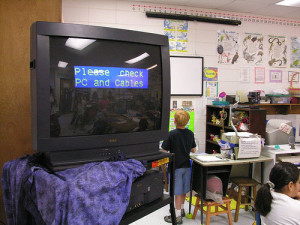I presented the dimension of subject didactics (in Finnish here) in the beginning of my PhD project. The concept of subject didactics originates from German educational research tradition and it means the subject-specific pedagogy. In the Anglo-American research, the pedagogical content knowledge (some background in Wikipedia) is often used instead of subject didactics. After five years and some more empirical research on schools’ media education, I think it is time to revisit the ideas presented in 2006.
There are many ways to theorize media education. It may have various forms in primary school such as arts education, social studies, child protection or learning technologies. Schools may call their media educational activities among other things magazine time, film education or, for example, learning with social media in which case the used medium is the defining principle.
What I have found important is to have a view based on educational sciences, too. In school context and from the teacher’s point of view, subject didactics covers a large area of what is behind the concept of teaching. The dimension of subject didactics presented in 2006 had two types of approaches, namely ‘subject didactics I’ and ‘subject didactics II’. In addition, the moral form of media education appearing especially in situational ways is opened.
Subject didactics I (media-based approach)
The approach can be seen as traditional subject didactics where the goal is to learn some entity of content, in this case about media. The pedagogical question is: how this subject-like content can be taught “effectively” or “well”. Since in Finland, there is no school subject of media education, the content of learning is usually a small entity in one of the existing schools subjects: in arts education it can be visual communication, in Finnish language types and genres of text, for example.
Subject didactics II (cross-curricular media education)
The second area of subject didactics relates to the integrative role of media education. It is part of learning and teaching of other school subjects. The focus of the media education is in the pedagogical approach and mainly the content to learn is not anymore media educational: for example, playing mathematical online game to learn algebra or watching a movie about climate change in environmental studies. These activities should be seen as substantial elements of media education when there are rarely dedicated lessons for media education.
Moral dilemmas
Many difficult moments of being a media educator relate to general thoughts of children growing up. The German concept of Bildung describes the aims which are in connection with this third form of media education. However, this should not be mixed with the moral defensiveness (Buckingham, 1998) since teachers are not necessarily blaming the media for inculcating “false beliefs or behaviors and for encouraging children to believe that all their problems can be solved through violence or through the acquisition of material goods.” Teachers can reason their actions in these situations multiply and without terror of world falling apart. This came out during the empirical period of my research.
Teacher just faces difficulties in media education with, for example, inappropriate media content. These situations form an area of media education which is surrounding the two earlier forms of media education. There are several issues in media, such as age-limited material, copyrights or child marketing, which can be taught during the dedicated lessons of media education or within other school subjects but mainly just come into play as a matter that needs to be handled outside of lesson plan. Schools also have many rules which create norms for media use and content in school.
>> a draft figure for these three forms of media education in school
In Finland, the boiling discussion around the distribution of lessons in basic education has created a huge competition between existing school subjects and large push from different interest groups to get (their) new school subjects into curriculum. There are rarely winners in this competition. The distribution of lessons haven’t changed too much during the last 100 years. I wouldn’t advice to fight for a subject status for media education. But the problem is that the subject teaching comes first and the rest is rather haphazard.
The relevance of media education is still built in the pedagogical moments that happen in ordinary activities. If the frontier must be set somewhere, the struggle with the strong subject-division-based school system should not be forgotten. There must be space for values, aims and (learning) methods that are set outside of school subjects. The actual life for children is inevitably outside of the Lehrplan and the media literacy is often practiced in the meaning-making and social interaction. All three forms of media education are needed. Only then it can fulfil its place in school education.

1 thought on “The dimension of subject didactics revisited”
Comments are closed.